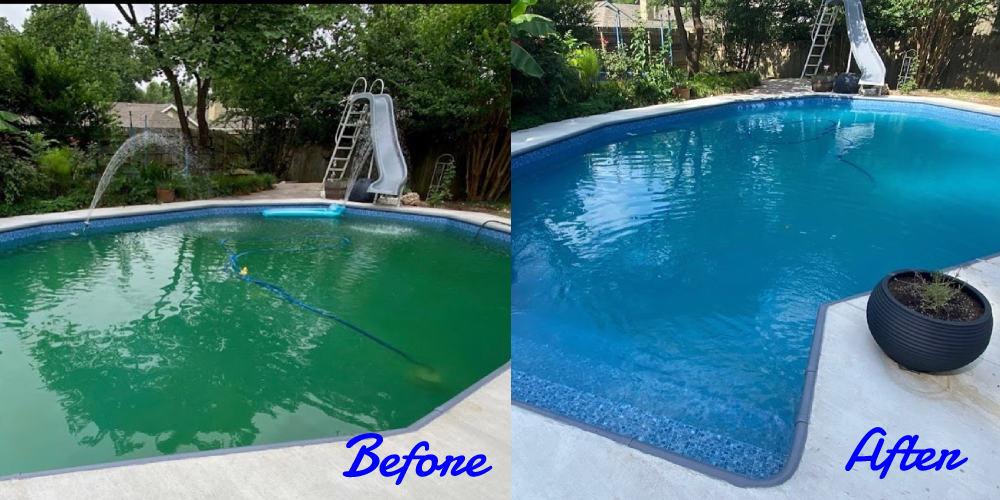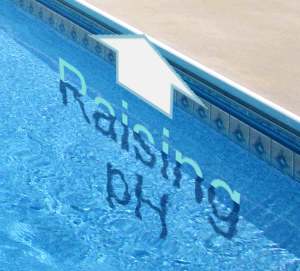To increase the pH in your pool, you can add soda ash or baking soda.

Credit: theelitepool.com
Common Causes Of Ph Imbalance
An optimal pH level is crucial for maintaining a safe and comfortable swimming environment. There are various factors that can lead to pH imbalance in a pool, both internal and external. Understanding these common causes is essential for ensuring the proper function and enjoyment of your pool.
External Factors
External factors are those that originate from outside the pool, often influenced by environmental conditions and external sources. Examples of external factors that can affect pH levels include:
- Rainfall: Acidic rainwater can lower the pH level of the pool water.
- Organic Debris: Leaves, grass, and other organic matter can introduce contaminants that alter the pH.
- Sunlight: Prolonged exposure to sunlight can contribute to pH fluctuations by accelerating the breakdown of chlorine.
Internal Factors
Internal factors refer to issues that stem from within the pool system itself, such as the water source and the activities of swimmers. These factors may include:
- Water Source: The source of water used to fill the pool may have its own pH level that can influence the overall pool pH.
- Chemical Imbalance: Improper use of pool chemicals, such as chlorine or pH adjusters, can disrupt the pH level.
- Swimmer Loads: The number of swimmers and their activities in the pool can impact the pH through sweat, oils, and bodily fluids.
Testing Ph Levels
Ensuring your pool’s pH levels are within the recommended range is crucial for maintaining a safe and enjoyable swimming environment. Testing the pH levels is a simple yet vital part of pool maintenance, and there are various methods you can use to ensure your pool water remains balanced.
Using Test Strips
To quickly and conveniently test the pH levels of your pool, test strips are a popular choice. Simply dip the strip into the water and compare its color to the provided chart to determine the pH level. Test strips are affordable and easy to use, making them a practical option for regular pH testing.
Electronic Ph Testers
For a more accurate and precise measurement of your pool’s pH levels, consider investing in an electronic pH tester. These devices offer digital readouts and can often test multiple aspects of water chemistry, including pH. While electronic pH testers may require a larger initial investment, they provide an efficient and reliable way to monitor and adjust the pH levels in your pool.
Methods To Increase Ph In Pool
Methods to Increase pH in Pool
Using Soda Ash
To increase pH in your pool, using soda ash is an effective method. Dissolve the required amount of soda ash in a bucket of water, then evenly distribute it over the pool surface.
Adding Baking Soda
Baking soda can also be used to raise pH levels in your pool. Sprinkle baking soda evenly around the pool, allowing it to dissolve and adjust the pH gradually.

Credit: www.youtube.com
Utilizing Muriatic Acid Safely
One of the most effective ways to increase the pH in your pool is by using muriatic acid. However, it is crucial to handle and store this acid properly to ensure both your safety and the integrity of the pool. In this section, we’ll discuss some dos and don’ts as well as proper handling and storage techniques to help you use muriatic acid safely.
Dos And Don’ts
When it comes to utilizing muriatic acid in your pool, it’s important to keep a few dos and don’ts in mind:
- Do dilute the muriatic acid before adding it to your pool. Mix it with water in a 1:10 ratio (one part acid to ten parts water) to avoid any potential damage to the pool’s surface.
- Do wear protective clothing, goggles, and gloves when handling muriatic acid to prevent accidental splashes or contact with your skin or eyes.
- Do add the diluted muriatic acid to your pool in small increments and allow time for it to circulate before retesting the pH. This will help you avoid overshooting the desired pH level.
- Don’t add muriatic acid to your pool while swimmers are present. It’s best to perform this task when the pool is not in use to avoid any potential exposure to the acid.
- Don’t mix muriatic acid with other chemicals, especially chlorine. Doing so can create hazardous fumes and pose a serious threat to your health.
Proper Handling And Storage
Now that we’ve covered the dos and don’ts, let’s discuss the proper methods for handling and storing muriatic acid:
- Store muriatic acid in a cool, dry, and well-ventilated area. Keep it away from other chemicals, flammable materials, and sources of heat or sparks.
- Always keep the original container tightly closed and clearly labeled to prevent any accidental misuse.
- If transferring muriatic acid to another container, ensure that the new container is made of a compatible material, such as polyethylene. Avoid using metal containers as muriatic acid can corrode them.
- When handling muriatic acid, pour it slowly and carefully to avoid splashes or spills. If any accidental spills occur, clean them up immediately with a solution of baking soda and water.
- After using muriatic acid, thoroughly rinse all tools and equipment with clean water to remove any remnants of the acid.
By following these guidelines for utilizing muriatic acid safely, you can effectively increase the pH in your pool without compromising your well-being or the pool’s condition. Remember to always prioritize safety when working with any chemical substances and take the necessary precautions to protect yourself and others.
Balancing Ph With Borax
Balancing the pH level of your pool water is crucial to ensure the health and longevity of your pool. Using borax is an effective method to increase the pH level of your pool, and it offers several benefits.
Benefits Of Borax
Borax, also known as sodium borate, is a natural mineral compound that has several advantages when used for pool maintenance. Its benefits include:
- Effectively raises pH level without impacting alkalinity
- Helps prevent the water from becoming too acidic
- Stabilizes the pH level for extended periods
- Environmentally friendly and safe for swimmers
Application Techniques
When using borax to increase the pH level of the pool water, it’s important to apply it correctly to achieve the desired results. Follow these application techniques:
- Start by testing the current pH level of the pool water
- Determine the amount of borax required based on the test results
- Dissolve the appropriate amount of borax in a bucket of water
- Pour the solution evenly around the pool while the pump is running
- Re-test the pH level after a few hours and reapply if necessary

Credit: poolforthought.com
Preventive Measures For Ph Balance
Maintaining the pH balance in your pool is crucial for water clarity and swimmer comfort. Increase pH levels by adding soda ash or sodium carbonate to prevent acidity and corrosion. Regularly test and adjust the pH to ensure a safe and enjoyable swimming environment.
Preventive Measures for pH Balance: Regular Maintenance The key to maintaining proper pH levels in your pool is adhering to a regular maintenance schedule. By routinely checking and adjusting the pH levels, you can prevent potential issues and ensure a comfortable swimming environment for you and your guests. Regular maintenance involves testing the pH levels at least twice a week and making necessary adjustments to keep the levels within the recommended range of 7.2 to 7.6. Proper Water Circulation Proper water circulation is essential for maintaining pH balance in your pool. Inadequate circulation can lead to localized areas of imbalanced pH, resulting in potential algae growth and other water quality issues. To ensure proper water circulation, strategically position the return jets and skimmers to maximize water movement and use a pool pump with the appropriate flow rate for your pool size. By following these Preventive Measures for pH Balance, you can maintain the optimal pH levels in your pool, promoting a healthy and enjoyable swimming environment for all.Conclusion
In a nutshell, maintaining proper pH levels in your pool is crucial for water quality. Follow these simple tips to increase pH effectively and keep your pool clean and safe. With the right balance, you can enjoy a refreshing swim all summer long.
Dive into crystal-clear waters now!





